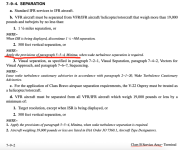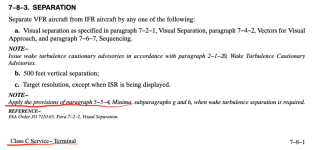creepstreets
Member
- Messages
- 13
We had a scenario come up, and there was a bit of a debate regarding wake turbulence for an aircraft in the pattern.
We had a large that was on a visual approach to the runway on right downwind. At the same time, we had a small on left downwind in the pattern. The large turned base, and we pointed out the traffic to the small so that he could follow the large in to the runway. If the small did NOT get the large in sight, would the small require the 4 miles in trail behind the large in 7110.65 5.5.4I?
We had a large that was on a visual approach to the runway on right downwind. At the same time, we had a small on left downwind in the pattern. The large turned base, and we pointed out the traffic to the small so that he could follow the large in to the runway. If the small did NOT get the large in sight, would the small require the 4 miles in trail behind the large in 7110.65 5.5.4I?



